Action Is Required for Building Anything
It doesn’t matter if we are building a home, a business or a life…they all require physical action. Planning is critical but not enough.
At a lunch meeting with my financial assistant (my sister) earlier this week we were discussing what is needed to move closer to achieving the company’s goals. This conversation confirmed what I already knew. By nature, I am a planner, a dreamer and a recovering perfectionist. I have lots of ideas and plans, all great ones too, no doubt. 😊 But it takes more than just plans.
The necessary thing needed to build the business, just like a building, is action. You can’t live in a blueprint. The same is true for a business. You have to move beyond planning. You have to do the first next thing.

When doing a construction project, I understand the order of the process – to start, proceed and finish. I asked myself why the physical construction comes naturally but I struggle with building a business. I have come up with a few reasons for this:
- It’s hard for me to delegate – I know that I suck at it. People who know me know that I suck at it. This leaves me with two options; do everything myself and do less or share the shovels. I listened to a Story Brand podcast a few days ago that pointed out that successful entrepreneurs don’t try to do everything by themselves.

- I have a broken people meter – I was thinking about the discussion with my sister and came to the realization that part of the delegation problem is that my people meter is broke or maybe I just don’t have one. So, I need to incorporate the help of people who have good people meters into the process of finding the right people to delegate to.
- My “to do list” is too long and I like lists – When the list of things that need to be done is too long we become overwhelmed. Being pulled in so many different directions leads to confusion and causes a lack of clarity. Trying to spin too many plates doesn’t move things forward it just makes us dizzy. Trying to do too many things causes chaos. I don’t have the time to do everything on my list. We need a plan for this but if things are going to change there needs to be some action.
-
Recovering perfectionist – Finding the separation between perfection and excellence is tricky. This is a very fine line. Having been a perfectionist for years it is difficult to not cross back into perfection. Perfection causes inaction. It slows down all the processes and makes it difficult to leave the planning and start the doing.
 Moving forward with the first next step I must narrowly clarify excellent delegation.
Moving forward with the first next step I must narrowly clarify excellent delegation.
Just like I can’t drive more than one nail at a time when doing physical construction, the same is true when building a business or a life. If I don’t quit trying to perfect the plans and start swinging the hammer I will never get anything built.


 Moving forward with the first next step I must narrowly clarify excellent delegation.
Moving forward with the first next step I must narrowly clarify excellent delegation.
 constantly wanting more TIME. To use a line from actress
constantly wanting more TIME. To use a line from actress 

 As part of the painting project I was making and installing the trim on these windows. Due to the age and style of the house the trim was more detailed than what is commonly used today. Not to mention that there was siding to cut back, house wrap and foil tape to install. It was taking me longer than I planned (another topic for later) and as I was working I thought about faster, cheaper ways that it could be done. I didn’t think about it very long before I decided that the short cuts wouldn’t be worth it. I wanted it done right.
As part of the painting project I was making and installing the trim on these windows. Due to the age and style of the house the trim was more detailed than what is commonly used today. Not to mention that there was siding to cut back, house wrap and foil tape to install. It was taking me longer than I planned (another topic for later) and as I was working I thought about faster, cheaper ways that it could be done. I didn’t think about it very long before I decided that the short cuts wouldn’t be worth it. I wanted it done right.
 A good example of this is a recent situation where a shelf caddy was installed in a shower out of plum. It was only out of plum about an 1/8” in 2’ which isn’t a lot. But it wasn’t right, it wasn’t level and it should have been. Now it’s got to be fixed, which could possibly mean cutting it out and replacing with a new one. At the very least it has to be taken back out and plumbed up. Either way it’s going to cost both time and money.
A good example of this is a recent situation where a shelf caddy was installed in a shower out of plum. It was only out of plum about an 1/8” in 2’ which isn’t a lot. But it wasn’t right, it wasn’t level and it should have been. Now it’s got to be fixed, which could possibly mean cutting it out and replacing with a new one. At the very least it has to be taken back out and plumbed up. Either way it’s going to cost both time and money.
 them that there are four simple rules for building well. Just make everything plumb, level, square and straight. Isn’t this great advice.
them that there are four simple rules for building well. Just make everything plumb, level, square and straight. Isn’t this great advice.




 and bad, that people have. This is especially evident with athletes, for example it has been reported that basketball superstar Michael Jordan wore the same pair of shorts under his NBA uniform for every game and Serena Williams ties her shoes the same way before every match and always bounces the ball five times before her first serve.
and bad, that people have. This is especially evident with athletes, for example it has been reported that basketball superstar Michael Jordan wore the same pair of shorts under his NBA uniform for every game and Serena Williams ties her shoes the same way before every match and always bounces the ball five times before her first serve.




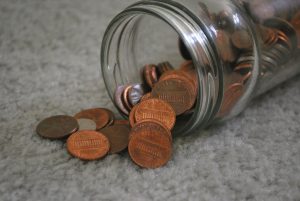


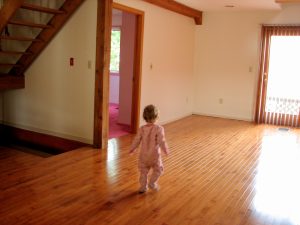 slicing mature bamboo poles into strips. Then these strips are cut into the desired lengths and widths, the outer skin and nodes are removed, and the strips are boiled in a solution of boric acid or lime to remove the sugar and starch. After it has been dried and planed the strips are laminated together, milled, sanded and finished creating the planks with either vertical or horizontal grain. Bamboo can be installed either with an interlocking joint system, nailed or glued. This product can be refinished however staining bamboo can be a challenge.
slicing mature bamboo poles into strips. Then these strips are cut into the desired lengths and widths, the outer skin and nodes are removed, and the strips are boiled in a solution of boric acid or lime to remove the sugar and starch. After it has been dried and planed the strips are laminated together, milled, sanded and finished creating the planks with either vertical or horizontal grain. Bamboo can be installed either with an interlocking joint system, nailed or glued. This product can be refinished however staining bamboo can be a challenge.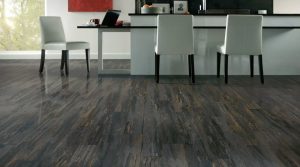 squares that used to be installed in homes. This product is made of resilient polyvinyl chloride (PVC) with a top layer of urethane. It comes in planks (to look like traditional wood floors), tiles (that can look like ceramic, stone, granite, marble, etc.) and is even available in patterns that resemble carpet squares. Luxury vinyl will range from 2mm to 5mm thick. It can be installed either in a snap together floating system or glued down.
squares that used to be installed in homes. This product is made of resilient polyvinyl chloride (PVC) with a top layer of urethane. It comes in planks (to look like traditional wood floors), tiles (that can look like ceramic, stone, granite, marble, etc.) and is even available in patterns that resemble carpet squares. Luxury vinyl will range from 2mm to 5mm thick. It can be installed either in a snap together floating system or glued down.
 Over the last several years floorcovering has gone from a few simple choices to so many that it can make your head spin. It used to be that carpet, sheet vinyl and wood were your main options. Now the number of various products, styles and finishes are overwhelming. Currently the trend is moving more and more to the solid surface products.
Over the last several years floorcovering has gone from a few simple choices to so many that it can make your head spin. It used to be that carpet, sheet vinyl and wood were your main options. Now the number of various products, styles and finishes are overwhelming. Currently the trend is moving more and more to the solid surface products.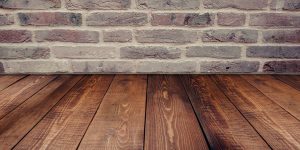


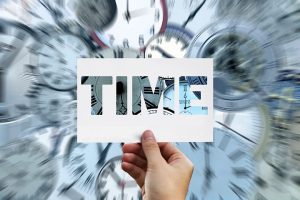 One of the discussions about this had to do with someone who was self-employed. This person’s family couldn’t understand why they couldn’t do some additional things around the house. They had extra time because, after all, they were self-employed. Another conversation was with a business owner. They said they hoped they wouldn’t need to work on the upcoming Father’s Day, because they had already worked the last fourteen days. Then he said, “but if that’s what it takes, I guess I will”.
One of the discussions about this had to do with someone who was self-employed. This person’s family couldn’t understand why they couldn’t do some additional things around the house. They had extra time because, after all, they were self-employed. Another conversation was with a business owner. They said they hoped they wouldn’t need to work on the upcoming Father’s Day, because they had already worked the last fourteen days. Then he said, “but if that’s what it takes, I guess I will”. We all know that there is a fixed amount of time so why is it that we’re always over filling it? Even less ambitious and less driven people complain about not having enough time to do everything they want to.
We all know that there is a fixed amount of time so why is it that we’re always over filling it? Even less ambitious and less driven people complain about not having enough time to do everything they want to. We have the power within our-SELF to take control of this.
We have the power within our-SELF to take control of this.
 I decided to write about this core value while reading “The Seventh Most Important Thing”, by Shelley Pearsall. In the story Mr. Hampton leaves a hand-written message for Arthur on a piece of cardboard,
I decided to write about this core value while reading “The Seventh Most Important Thing”, by Shelley Pearsall. In the story Mr. Hampton leaves a hand-written message for Arthur on a piece of cardboard,  It has been my experience when building a building that people have a dream of what they envision the finished project to look like. The problem is, they don’t know how to get that dream from their head to a physical structure. This is where vision comes in. The vision is the process of taking the imagined and turning it into reality. This provides a clear and intentional plan for building the dream.
It has been my experience when building a building that people have a dream of what they envision the finished project to look like. The problem is, they don’t know how to get that dream from their head to a physical structure. This is where vision comes in. The vision is the process of taking the imagined and turning it into reality. This provides a clear and intentional plan for building the dream.